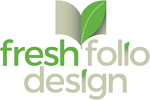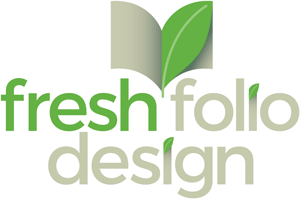Some people believe that all brochures are the same. However, there are actually different types of brochures you can utilize depending upon your message. Think of it as the “Swiss Army Knife” in your marketing toolkit.
Let’s take a look at 3 brochures, and real-world examples, so you can determine how best to use them to further your message and bring value to your audience.
The 3 kinds of brochures we will review are: Informative, Take action, and Persuasive.
While this is by no means an exhaustive list, we think you will find that the majority of brochures fall in one of these three categories. Let’s look at the purpose of each type and highlight the advantages that a well-designed brochure within that format provides.
The Informative Brochure

This brochure is bringing information to the reader. Unlike other types, it isn’t asking the reader to do anything, but instead it is simply informing the audience about a particular topic or providing a status update.
One example of an Informative Brochure was a project we worked on with Farm & Fleet. The FDA (Food and Drug Administration) made some changes to drug guidelines that would directly impact some of their customers.
This was not a change within their organization, however, they knew it was important information that their customers would need to have.
While some of their customers may have been aware of this change through other sources, Farm & Fleet brought value to their customers by having a brochure designed explaining the changes and then made it available at their stores.
Customers could review the brochure in the store or take one with them to use as a resource later.
For a customer not aware of the changes, Farm & Fleet established trust by ensuring the customer was aware of these changes.
If a customer already knew about this change, seeing this brochure confirmed that Farm & Fleet was a knowledgeable, and reliable, source for changes in the industry and that they were concerned about their customers even when Farm & Fleet potentially had nothing specific to gain.
The Action Brochure
 The second type of brochure is one primarily designed to help the reader to take action. That could be making a purchase, attending an event, or visiting a website.
The second type of brochure is one primarily designed to help the reader to take action. That could be making a purchase, attending an event, or visiting a website.
Some people are not ready to make a purchase when they are standing in your store or speaking to your salesperson.
A brochure can be your “silent salesperson”.
A well-designed brochure continues to do the work of sales long after your customer has walked out the proverbial door.
An example of the Action Brochure would be at a conference or event where you are promoting the next conference.
Attendees of the event don’t need to know your company story or read information about who you are and what you do. They are already at your event; most likely they already have a clear understanding of all those things. However, you still want them to have the information about your next conference and how to register.
What you are asking is clear and direct, but some people may not be in a position to close that deal at the event. They may need to get approval from a boss or review their calendar before they can decide. An Action Brochure will be helpful to review later or the perfect pass-along to their boss.
The Combination or Persuasive Brochure
 The final type of brochure is a combination of the Informative and Action Brochures. This Combination or Persuasive Brochure informs or educates your audience and then provides a clear action to take.
The final type of brochure is a combination of the Informative and Action Brochures. This Combination or Persuasive Brochure informs or educates your audience and then provides a clear action to take.
This is the most powerful type of brochure because it combines the power of story with the engagement of a call-to-action.
A good example of this is the recruitment brochure we created for St. Peter’s School. You can review our case study of this project here.
The purpose of this brochure was to inform families about the program & offerings of the school and then invite them to take the next step of calling to ask more specific questions or set-up a visit to the school.
The Combination Brochure provides information on a product or service and a compelling call-to-action.
So, now that you know the 3 basic types of brochures, determine which one best suits your messaging needs. Do you have information that your audience would benefit from? Do you have specific action that you want your customer to take and need to make the ask? Or is it a combination of the two?
Once you are clear on what needs to be done, you can add an engaging brochure to your marketing plan to help you reach that goal.




Leave a Reply